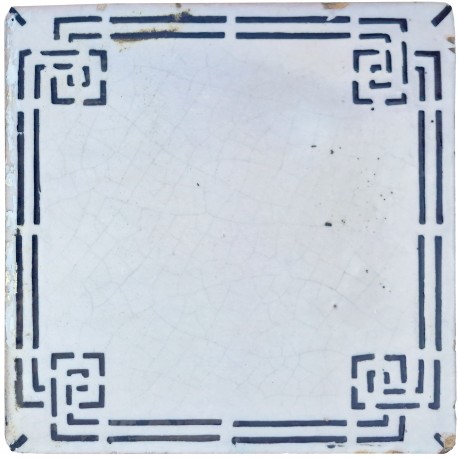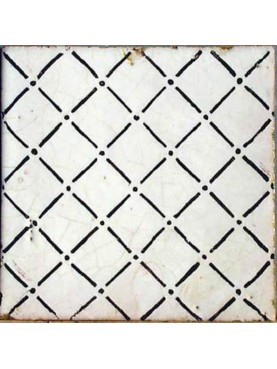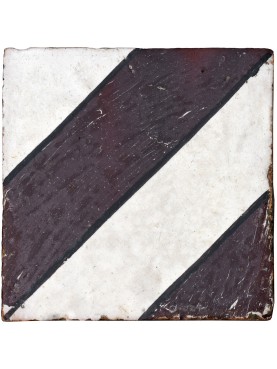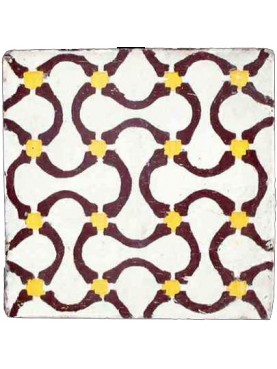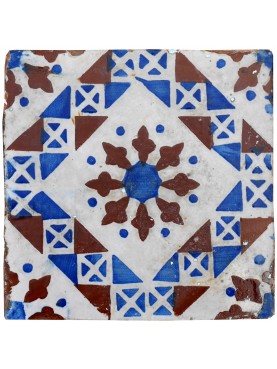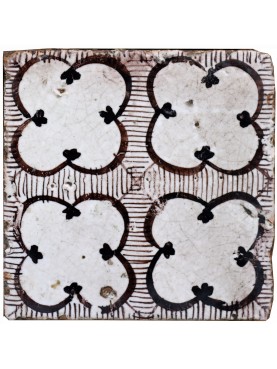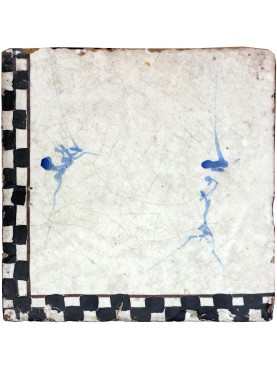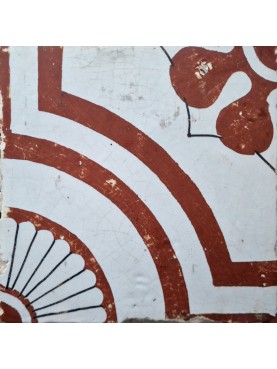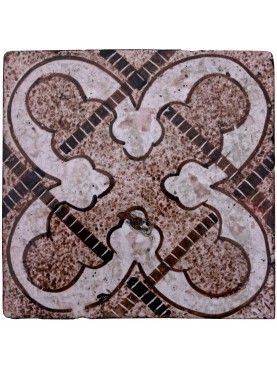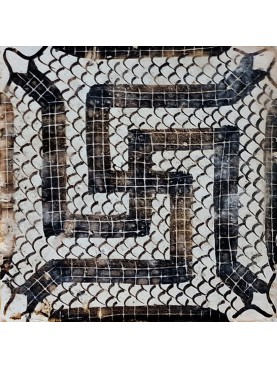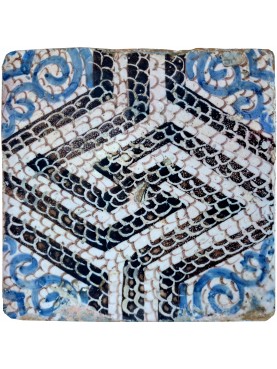Ancient black manganese greek frame tile
Ancient black manganese greek frame tile
Original
19th century Neapolitan tile 20x20 cm Greek frame black manganese and white aluminum oxide hand painted.

IMMEDIATELY AVAILABLE - packing times 1 working day + shipping times depending on the destination
10 Available
Data sheet
| Thickness | 0.71 in | 1,8 cm |
| Weight | 2.87 lbs | 1,3 Kg |
| Ancient manufacturing source | GERBINO S. AZZOLINA | |
| Side * Side | 7.87 in X 7.87 in | 20x20 cm |
| Material | Majolica |
More info
the GERBINO family
.... in full Sicilian Baroque epic the Duke of Camastra
he rebuilt the current site of S. Stefano di Camastra, restoring its dignity
surviving craftsmen of a catastrophic natural event that had
destroyed the old farmhouse in his lands.
The territories of S. Stefano were very rich in materials
clayey and with the ingenuity and wisdom acquired from the peoples e
from the cultures that had dominated the territories in past centuries,
these craftsmen took it upon themselves to exploit this resource
handing down one of the most prestigious traditions of the land of Sicily.
The " GERBINO family " was one of the first artisan workshops
who was able since the end of the 15th century to set up various pottery production workshops,
recognized for the prestige of the shapes and for the particularity of the decorations.
When Luigi Pirandello wrote his famous novel "La Giara" in 1900, it is very probable that he was referring to one of the many jars produced in the Gerbino family's furnaces, into which even today the land of Sicily is transformed, as if by mystical ritual, from inert matter in precious vases.
The "Premiata Fabbrica di Carmelo Gerbino e Compagni", established in 1874, characterized by an oval brand with a star in the centre, was specialized in the production of majolica bricks of great value. These are bricks with great care in the making of the biscuit, but also in the predominantly geometric decoration or with plant motifs, performed with the aid of the mask, and well defined individually by hand. An example is the beautiful flooring existing in Palazzo Trabia. Another company is that of "Salvatore Gerbino and sons", characterized by the oval brand with an anchor in the center, probably born under the auspices of Don Gaetano Armao and due to kinship reasons. No less important are those belonging to Rosario Piscitello and Biagio Franco, to the Napoli, to the Mazzeo; some specimens made by these majolica makers are present in the Ceramics Museum and in the Old Cemetery, used in the two-year period 1878 / 1880.
Text published in the catalog "Walking on the past" majolica terracotta tile from the 16th to the 20th century edited by the Andrea Pantaleo Cultural Association - Monreale 1995 Courtesy

